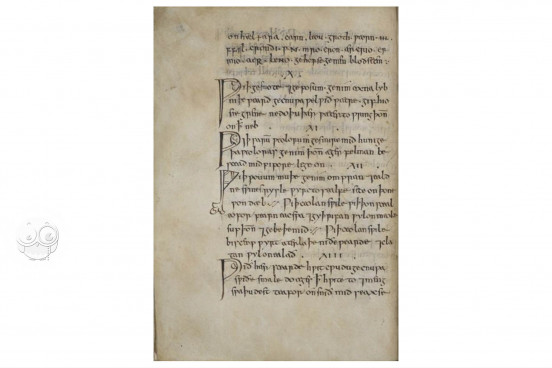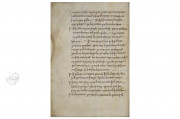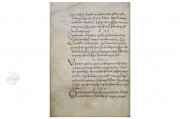Bald’s Leechbook is the older of two early English medical handbooks, the other being the British Library's MS Harley 585. It was copied around the year 960 at the behest of a physician named Bald by a scribe named Cild. The book contains Old English charms and remedies in three sections. The first two may be copies of texts from Alfred the Great's library. The third replicates much of the first book and contains additional spells and charms. The book is without pictorial embellishment, although the scribe elaborated the initial letters in various ways.
A detailed list of contents precedes each of the manuscript's three texts. Each entry is numbered with a Roman numeral. The first and third books are more formal, while the second focuses on charms and magic. The manuscript serves as an important record of English medicine of the period before the Norman Conquest and is a rare secular text from the period.
Preconquest Magic and Medicine
While modern science differentiates between magic and medicine, people of the early Middle Ages perceived ailments as the work of malevolent elves and demons, and many cures were focused on keeping such forces at bay. The book is an important record of preconquest medicine not only in revealing the types of cures and medicines available at the time but also in recording the names of two practitioners, Oxa and Dun, indicating that the medical trade relied on physicians exchanging knowledge of various treatments.
The colophon makes clear the importance of medical handbooks as repositories for knowledge: Bald writes that his books are his richest treasure and invokes the protection of Christ over them (fol. 109r).
The Handbook of a Medical Practitioner
Dependable medical knowledge was difficult to come by in the Middle Ages. In the late ninth century, Elias III, the Patriarch of Jerusalem, sent medicinal recipes and exotic ingredients to King Alfred the Great of Wessex. Other cures had been passed down from ancient Greek and Roman sources and yet others originated in ancient Egypt or in folk practice. Marginal annotations throughout indicate that the book was in use over a number of years.
Book Written in the Old Saxon Tongue of Medicine
Cild, the scribe of Bald's Leechbook, was probably based at the scriptorium of the cathedral of Winchester. The manuscript may be one of the books listed in the catalog of the Rochester cathedral library in 1202 or it may have been kept at Glastonbury. It eventually entered the English royal library and was listed in a Westminster inventory of 1542. In 1757, it entered the library of the British Museum.
We have 1 facsimile edition of the manuscript "Bald’s Leechbook": Bald’s Leechbook facsimile edition, published by Rosenkilde and Bagger, 1955
Request Info / Price


